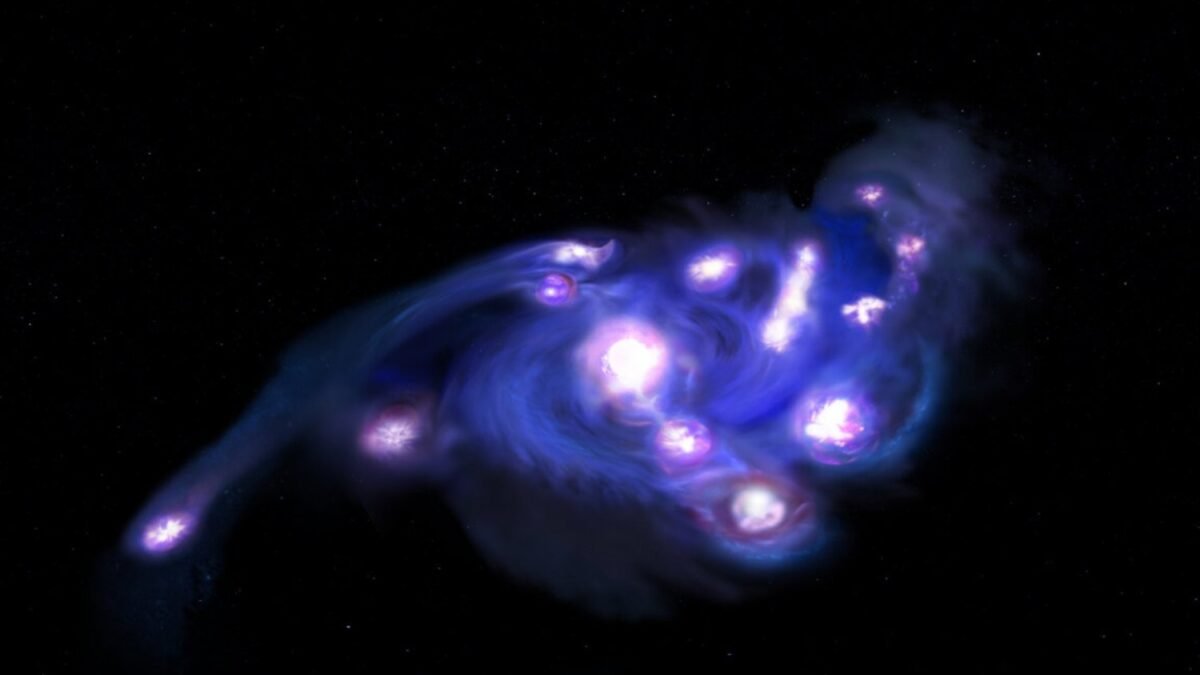The “cosmic grapes” revealing an unexpected secret about the first galaxies

Deep within the early universe, when the galaxies were just beginning to spin in the void, astronomers have discovered an unexpected gem. Dubbed “cosmic grapes,” it challenges previous ideas about star formation, showing a pattern that resembles more a luminous cluster than a
A Cluster of Stars at the Dawn of the Cosmos
emerged in the data as a fascinating anomaly. Formed just 930 million years after the Big Bang, it houses at least 15 massive star-forming clusters concentrated in a rotating disk. Each cluster shines with the intensity of millions of suns, creating a structure that contrasts with the , where stars were distributed more homogeneously.
Astronomers did not observe this phenomenon by chance. To detect such distant details, they combined the sensitivity of the James Webb Space Telescope (JWST) with the millimeter precision of the .
The Gravitational Lens that Made the Invisible Visible
The distance of the galaxy to Earth would have made this study impossible without the help of the gravitational lens, an effect predicted by Einstein in which the gravity of a massive object curves and amplifies the light from a more distant one. is “one of the most distant galaxies with the largest gravitational lens ever discovered.”
This amplification allowed researchers to see its internal structure like never before: dense and compact clusters, comparable in scale to gigantic star factories. For Mike Boylan-Kolchin, coauthor of the study, this confirms that some early galaxies did not shine uniformly, but their light was dominated by these massive concentrations.
📡🛰️”The universe’s secret harvest: Shedding light on ‘the cosmic grapes’” by
— ALMA Observatory📡 (@almaobs)
A Glimpse into the Laboratory of the Primitive Universe
is just beginning, but it already promises to provide valuable clues about the evolution of galaxies. Understanding how and why these clusters formed could help us reconstruct the history of the earliest cosmic structures.
In such a young universe, where matter was still finding its place, may be the key to understanding how the first star clusters shaped everything we see today.





